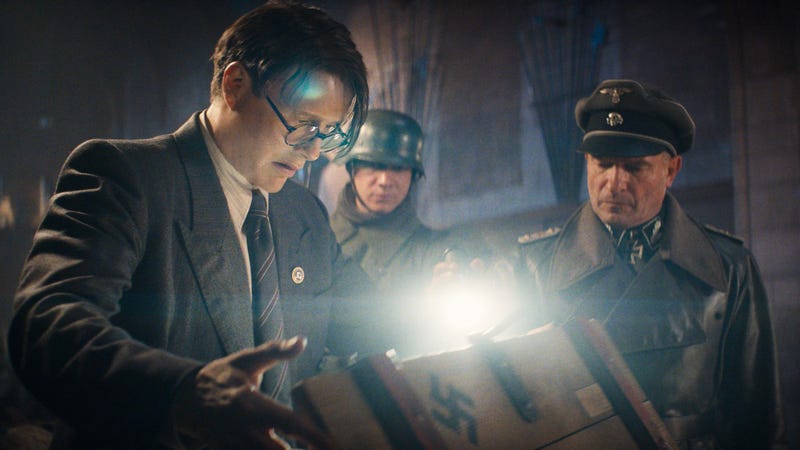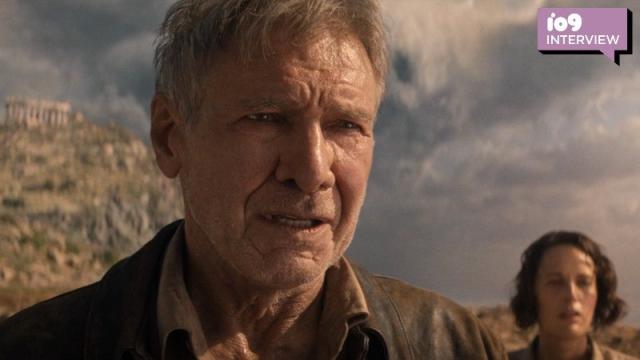Indiana Jones movies always end with the impossible. Ghosts coming out of an ark, a rock healing a village, a cup granting immortality, aliens with crystal skulls. So, when Indiana Jones and the Dial of Destiny gets to its big third-act moment, it’s shocking, but also fits right in. However, getting to that idea wasn’t instantly obvious, as the film’s director James Mangold told io9 in a new interview.
We’re going to dive into spoilers now, but if you haven’t seen Indiana Jones and the Dial of Destiny, it’s streaming on Disney+ and available on 4K Blu-ray at those links.

In Dial of Destiny, the film’s villain Jürgen Voller (Mads Mikkelsen) uses the titular dial to, he hopes, go through a fissure in time and arrive in pre-World War II Germany. Voller wants to kill Hitler and take over Nazi Germany himself, thereby changing the course of history. However, once Voller and the other characters go through the fissure, everyone ends up in Syracuse, Italy in 212 BC. A time and place Indy has studied his whole life.
That ending—Indiana Jones time travel for simplicity’s sake—was not in place when Mangold came on board to direct the movie.
“When I came on the movie, they had been playing with a bunch of different things which were basically just reduxes of what had happened in the first movie,” Mangold told io9 over video chat. “Just more apparitions and ghosts and I felt like I was just watching the first movie over again when I envisioned what was in the existing scripts. And I felt like what Steven [Spielberg] and George [Lucas] and Larry Kasdan and David Koepp as well had done successfully in the other films, was to keep kind of pulling up a rock on a different aspect of history and metaphysics and not going back to the same thing. In a way I didn’t want to do the kind of ‘Is it a Death Star again?’”
Mangold went back to the drawing board. He knew he had an older hero in an era that’s kind of passed him by, and “the movie is exploring the themes of time, past and present. That became my central idea.” Which is why the movie opens in the past and, in other iterations, went back there at the end. “When we did start writing, it was my theory that at first that we would end up back in Nazi Germany in 1938,” he said.

Yes: once Mangold and the team realised they wanted the dial to bring Indy back in time, the first idea was that Voller’s plan would work and Indy would just have to stop him in Germany.
“As we got there, it started occurring to me that a) that’s what the audience is going to be anticipating, and therefore not very surprising to them, and b) we’d be plunged just back into the opening of the film only with a 79-year-old Indy running around,” Mangold said. “I felt we needed something more shocking, something bolder, and something that also affected Indy. If he had gone back to Nazi Germany, he would simply be a hero trying to stop Voller from doing his plan. If he ended up where he does end up in the film, he was going to be facing bigger questions about his own life and what he studied all his life. And I thought that was going to be more interesting. And also, usually bolder is better if you can do it.”
And the rest, like Indiana Jones himself, is history.
Again, Indiana Jones and the Dial of Destiny, is now streaming on Disney+ and available on 4K Blu-ray. We’ll have more from Mangold next week including a very surprising link to a Disney animated film.
Want more entertainment news? Check out when to expect the latest Marvel, Star Wars, and DC releases, what’s coming to cinemas in Australia this year, and everything streaming this month across all platforms. Check out our dedicated Entertainment tab for more.
